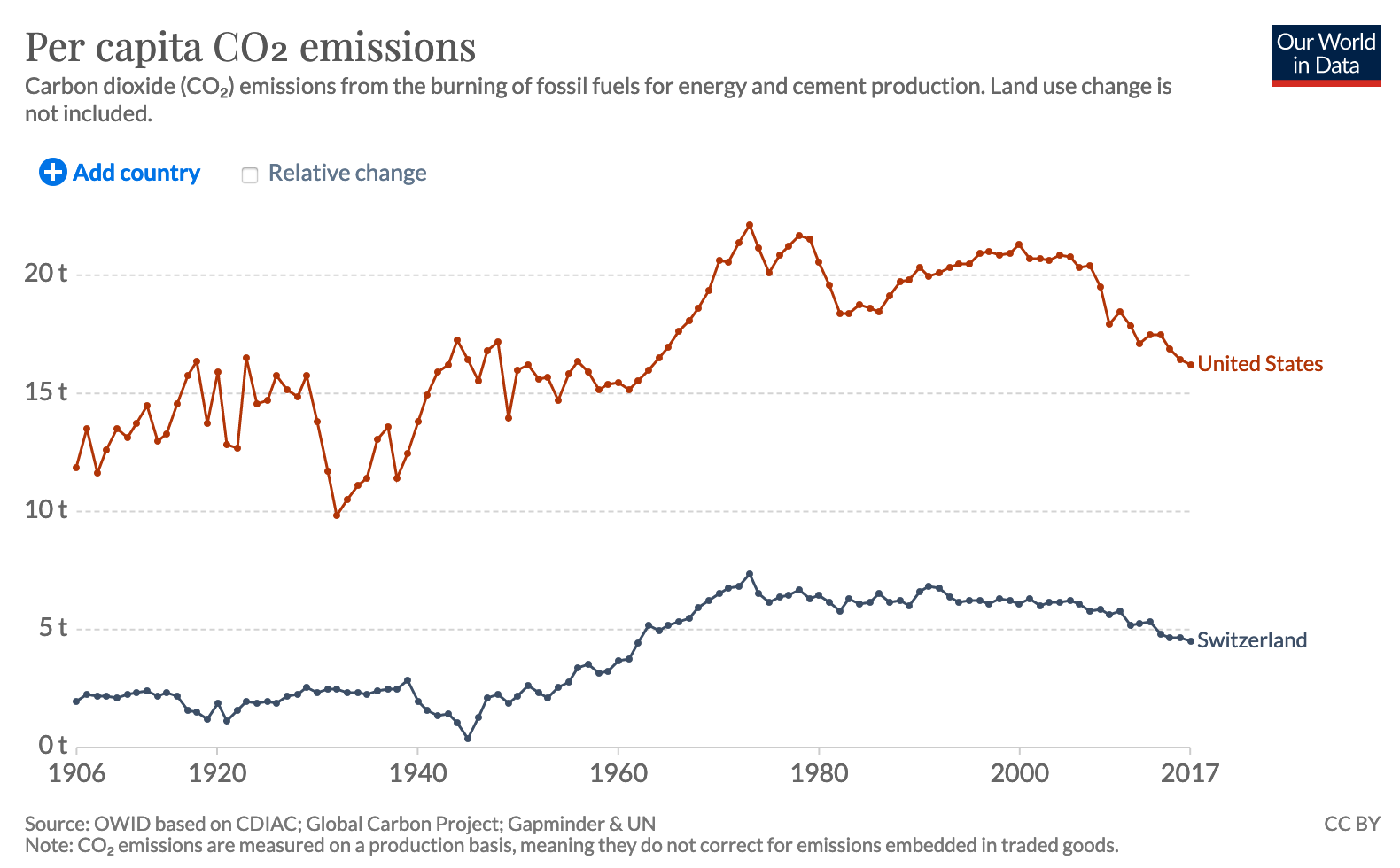19.3: Introduction to Sustainability
- Page ID
- 72415
Section Hook
Cities in today’s modern world are struggling to balance a sustainable society, economy, and environment. According to a 2016 report that rated sustainability across 32 indicators, Zurich, Switzerland, was ranked number one. Zurich invests in renewable energies, sustainable public transport, public green space, and public education. One of the most notable ways Zurich is leading global sustainability efforts is their dedication to keeping their carbon dioxide emissions low. Figure \(\PageIndex{a}\) below shows the difference in emissions for the United States and Switzerland:

Figure \(\PageIndex{a}\): Per capita emissions of carbon dioxide between the United States and Switzerland. Graph by Our World in Data (CC-BY4.0)
Introduction
Sustainability is derived from two Latin words: sus which means up, and tenere which means to hold. Thus, sustainability is essentially about holding up human existence by meeting the needs of the present without compromising the ability of future generations to meet their needs.
There are three dimensions that sustainability seeks to integrate: economic, environmental, and social (including sociopolitical).
- Economic interests define the framework for making decisions, the flow of financial capital, and the facilitation of commerce, including the knowledge, skills, competences and other attributes embodied in individuals that are relevant to economic activity.
- Environmental aspects recognize the diversity and interdependence within living systems, the goods and services produced by the world’s ecosystems, and the impacts of human wastes.
- Social/Socio-political refers to interactions between institutions/firms and people, functions expressive of human values, aspirations and well-being, ethical issues, and decision-making that depends upon collective action.
The intersection of social and economic elements can form the basis of social "equitability". In the sense of enlightened management, "viability" is formed through consideration of economic and environmental interests. Between environment and social elements lies “bearability,” the recognition that the functioning of societies is dependent on environmental resources and services. At the intersection of all three of these lies sustainability (figure \(\PageIndex{b}\)).

The three main elements of the sustainability paradigm are thought of as equally important, however, tradeoffs occur depending on the local/global objective. For example, in some instances it may be deemed necessary to degrade a particular ecosystem in order to facilitate commerce, or food production, or housing. In reality, the extent to which tradeoffs can be made before irreversible damage results is not always known, and in any case there are definite limits on how much substitution among the three elements is wise (to date, humans have treated economic development as the dominant one of the three). This has led to the notion of strong sustainability, where tradeoffs among natural, human, and social capital are not allowed or are very restricted, and weak sustainability, where tradeoffs are unrestricted or have few limits. Whether or not one follows the strong or weak form of sustainability, it is important to understand that while economic and social systems are human creations, the environment is not. Rather, a functioning environment underpins both society and the economy.
Attribution
Modified by Rachel Schleiger from Sustainability: A Comprehensive Foundation by Openstax (licensed under CC-BY)


